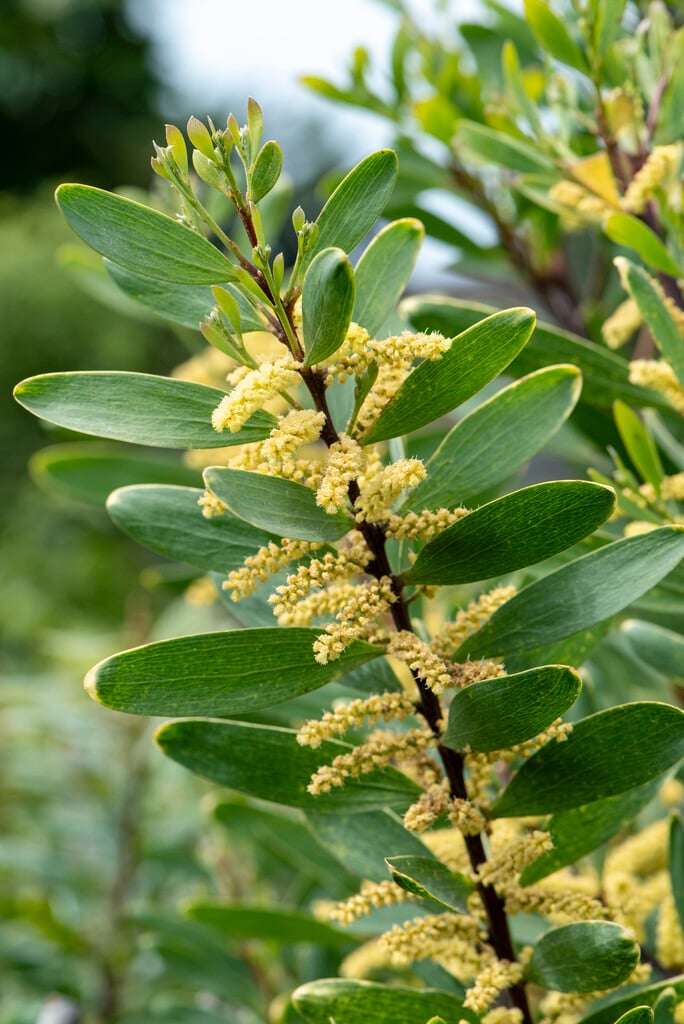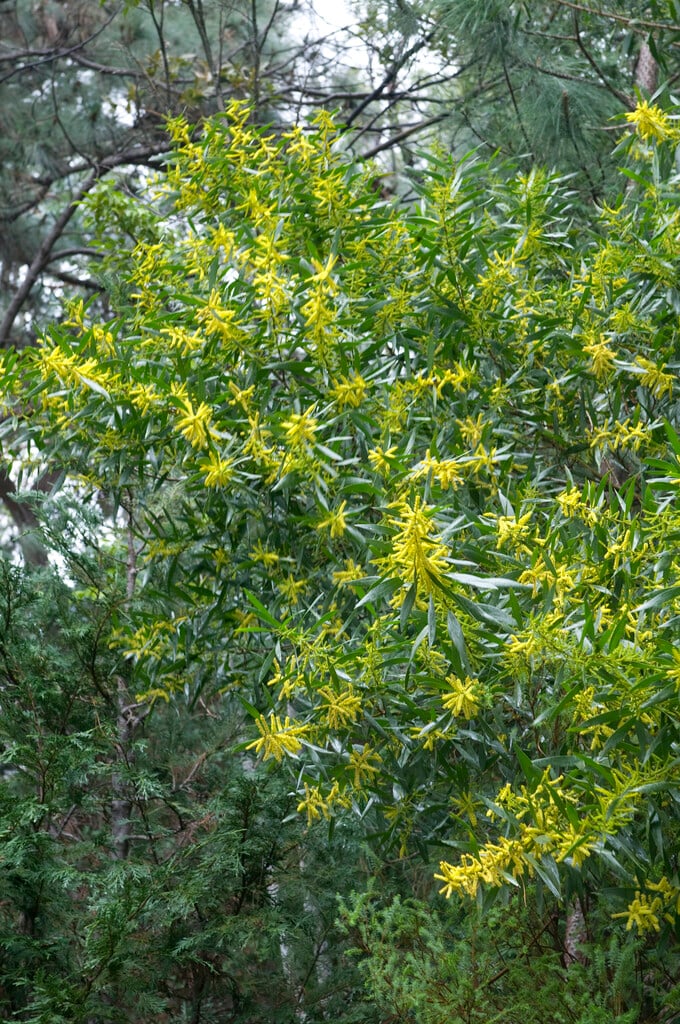Acacia longifolia
Sydney golden wattle
An evergreen, fast-growing small tree or shrub. The 'leaves' are 20cm long and narrow with a slight curve. The flowers are bright yellow in a great many 'candles' off the main stem. If seed pods develop, they are curly brown ribbon-like pods that look like tagliatelle
Size
Ultimate height
4–8 metresTime to ultimate height
10–20 yearsUltimate spread
2.5–4 metresGrowing conditions
Moisture
Well–drainedpH
Acid, NeutralColour & scent
| Stem | Flower | Foliage | Fruit | |
| Spring | Yellow | Green | ||
|---|---|---|---|---|
| Summer | Green | |||
| Autumn | Green | Brown | ||
| Winter | Green |
Position
- Full sun
Aspect
East–facing or North–facing or South–facing or West–facing
Exposure
ShelteredDrought resistance
Yes Hardiness
H5Botanical details
- Family
- Fabaceae
- Native to GB / Ireland
- No
- Foliage
- Evergreen
- Habit
- Spreading branched
- Genus
Acacia can be deciduous or evergreen trees, shrubs or climbers, with alternate, pinnately divided leaves or simple modified leaf-like stalks (phyllodes), and tiny, sometimes fragrant, flowers in short spikes, or in racemes or spikes of spherical heads
- Name status
Correct
How to grow
Cultivation
Grow outdoors in neutral to acid well-drained soil in sheltered location with full sun. This is one of the hardiest Acacias and has become invasive in warmer countries where it has become introduced. For more advice, see shrub cultivation
Propagation
Propagate by semi-ripe cuttings or seed. For advice see propagatiom from seed (tree/shrub
Suggested planting locations and garden types
- Mediterranean climate plants
- Banks and slopes
- Hedging and screens
Pruning
Pests
May be susceptible to glasshouse red spider mite, fluted scale and mealybugs
Diseases
May be susceptible to honey fungus
Love gardening
Sign up to receive regular gardening tips, inspiration, offers and more
View our Privacy Policy
Get involved
The Royal Horticultural Society is the UK’s leading gardening charity. We aim to enrich everyone’s life through plants, and make the UK a greener and more beautiful place.

